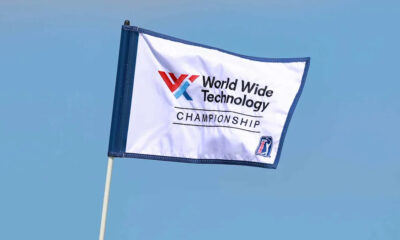
Welcome to SI Golf’s Bad Takes Week, where we suggest wild ideas to improve the game. Check out our other takes here and let us know if you agree or disagree on our X account.
Change is coming to the PGA Tour, but in what form is unclear. New CEO Brian Rolapp used the term “scarcity” and that has led to plenty of conjecture, including the idea that there might be contraction in some form. It makes sense as Rolapp comes from the NFL, where every week is seemingly of big importance.
If this is the case, and the Tour is really considering shrinking its tournament schedule, perhaps one way to do so is to scatter some off weeks throughout the year, giving players and fans a forced break while quite likely enhancing the stature of the tournaments that follow.
And to take it further—schedule them the week after the major championships.
Sports Illustrated’s Free Golf Newsletters. dark. Sign Up Now. SI Golf Newsletters
There is so much focus, so much attention, so much interest in the game’s biggest tournaments that there is an obvious lull in the aftermath. Players want to take a breath. So do fans, who might be less inclined to tune in a week later.
This is not to say there is anything wrong with the RBC Heritage (which follows the Masters) or the CJ Cup Byron Nelson (PGA Championship) or Travelers Championship (U.S. Open) or 3M Open (British Open). Those events can be worked into the schedule elsewhere. The Heritage and Travelers are signature events that will get strong fields regardless.
But fewer events means the top players are spread around a bit more. It strengthens the remaining events, which is seemingly what Rolapp is hoping to achieve.
Of course, if there are open weeks, the Tour’s lament has always been that someone else will step into the void. It’s why the year is blanketed with tournaments, sometimes to the detriment of the overall product.
And certainly, the weeks after the majors would be a prime opportunity for the LIV Golf League to step in. But that is actually the path to some sort of deal (keep in mind, this is admittedly a Bad Take, so hang in there). If there is ever going to be peace between the two entities, allowing LIV to have the stage to itself along with the potential television partners that could showcase their events—and pay rights fees—allows for success that PGA Tour Enterprises seemingly feels is not possible in the current environment.
How that impacts LIV’s schedule the rest of the year would be up for debate, and perhaps goes against the idea of giving fans a break, but for those who need a golf itch to scratch, that would be it.
Even without LIV stepping into the void—a deal between the PGA Tour and Public Investment Fund, which backs LIV Golf, seems nowhere close—there is a benefit to off weeks. Players required to take a week away are more likely to come back at the same time, which enhances those tournaments that front the majors as well as those that follow the off week.
And if the Tour ever comes up with a more ambitious plan beyond the FedEx Cup schedule—a Champions League concept, if you will—then forcing some downtime enhances the possibility that guys would be more keen on competing outside of the regular schedule.
Rolapp knows better than anyone that one of the attractions of the NFL is the schedule is short enough to cause fans to miss it. The game is packed into a four-month window and yet is discussed year-round. When a new season approaches, fans can’t wait.
Is that really the case with golf? A few breaks here and there might make fans miss it and thus be more inclined to watch when it comes back around.
Golf has always been about flooding the market. Perhaps less will be more.
More Golf from Sports Illustrated
Source link













